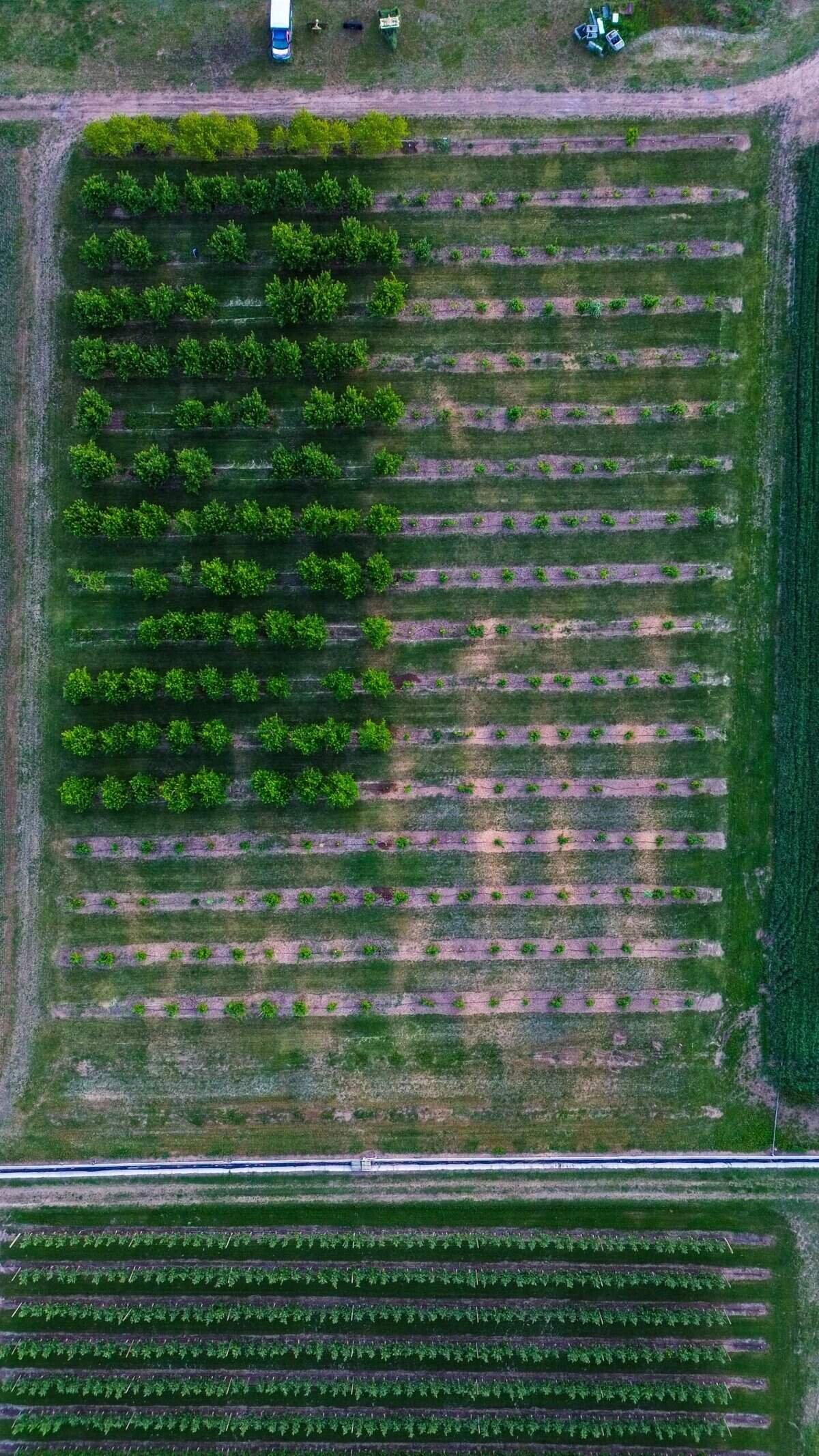Are you trying to find exchanges that offer yield farming options and wondering which ones are safest and most suitable for your goals?

Which Exchanges Offer Yield Farming Options?
This article lists and compares exchanges and platforms that offer yield farming, explains the different types of yield farming products, and helps you decide which options match your risk tolerance and technical comfort. You’ll learn about both decentralized platforms (where you control your keys) and centralized exchanges (which offer custodial yield products), plus practical steps to start farming safely.
What Is Yield Farming?
Yield farming is the practice of locking or lending your crypto assets to earn returns in the form of interest, trading fees, or governance tokens. You’ll encounter many implementations: liquidity provision on automated market makers (AMMs), lending markets, staking of protocol tokens, and structured “Earn” products on centralized platforms.
Yield farming often promises high yields, but those returns usually come with added complexity and risk. Understanding the mechanics helps you pick the right platform and strategy.
Centralized Exchanges (CEX) vs Decentralized Exchanges (DEX)
You’ll find yield farming opportunities on both CEXs and DEXs, but the experience and risks differ. Centralized exchanges are custodial and typically simpler to use, while decentralized exchanges are non-custodial and more flexible but require more technical knowledge.
Centralized platforms often provide user-friendly interfaces, simplified products (like staking, savings, or liquidity mining), and sometimes insurance. Decentralized platforms offer composability and permissionless access to a wide range of pools and novel tokens.
Key Differences: CEX vs DEX
Below is an at-a-glance comparison to help you distinguish the main trade-offs between centralized and decentralized yield farming.
| Feature | Centralized Exchanges (CEX) | Decentralized Exchanges (DEX) |
|---|---|---|
| Custody | Custodial (exchange holds your funds) | Non-custodial (you hold private keys) |
| Ease of use | Generally simpler UI/UX | Requires wallet setup and gas management |
| KYC/AML | Usually required | Typically permissionless |
| Smart contract risk | Lower (but counterparty risk exists) | Higher (smart contract risk, audits matter) |
| Range of pools | Limited, curated | Very wide, many pools and tokens |
| Yield levels | Often lower but more stable | Can be higher but more volatile |
| Insurance options | Sometimes offered | Rare, generally external insurance protocols |

Popular Centralized Exchanges Offering Yield Farming-Like Products
Centralized exchanges frequently market products under names such as “Earn,” “Staking,” “Liquidity Farming,” or “Savings.” These products may be custodial and may not strictly qualify as on-chain yield farming, but they deliver similar passive income opportunities.
Binance
Binance is one of the most feature-rich centralized exchanges in terms of yield products. It offers staking, liquidity farming, liquidity swap pools, and Binance Earn, which includes flexible and locked savings, dual-invest products, and auto-invest.
You can access both simple staking (for PoS tokens) and more advanced liquidity pools tied to BNB, stablecoins, and other assets. Keep in mind Binance is custodial, so the exchange holds your assets while they’re producing yield.
Crypto.com
Crypto.com provides Earn products, flexible and fixed-term staking, and various promotional liquidity offerings. Their app-focused approach makes yield farming-like products highly accessible to less technical users.
You’ll often see incentives for staking CRO (their native token), and yields may be tiered based on your stake level or subscription to native services.
KuCoin
KuCoin offers an “Earn” hub that includes staking, flexible savings, and liquidity mining opportunities. KuCoin sometimes lists promotional yield programs for new tokens or special campaigns.
KuCoin has a diverse token listing strategy, which can mean access to many newer tokens with attractive APYs — but newer tokens typically carry higher project risk.
Gate.io
Gate.io offers liquidity mining, staking, and “Earn” products, often with many niche pools and token projects. It’s popular among users seeking a broader variety of yield opportunities across smaller tokens and ecosystems.
Gate.io tends to provide advanced options and occasional high-yield promotions, but you should carefully vet the underlying projects.
Bybit
Bybit has been expanding yield products including staking, liquidity mining, and Earn programs. They often present a balance between user experience and a variety of products.
Bybit is growing as a CEX competitor and frequently introduces products that mirror decentralized strategies while remaining custodial.
Centralized Exchange Considerations
When using CEX yield products, you should weigh custody and counterparty risk. The exchange holds your assets and executes the yield-generating activity, so platform security, regulatory compliance, and track record matter greatly. Also check lock-up periods, withdrawal terms, and whether the product’s APY is promoted and subject to change.

Decentralized Exchanges and Protocols (DEX / DeFi Protocols)
Decentralized platforms are where most traditional yield farming occurs: you provide liquidity to AMMs, lend/borrow in money markets, or deposit into protocol vaults that automatically optimize returns.
You’ll manage your own wallet (e.g., MetaMask, Trust Wallet, Ledger) and interact directly with smart contracts. This model gives you full control but adds the need to understand smart contract risk, gas fees, slippage, and impermanent loss.
Uniswap (Ethereum, Layer-2s)
Uniswap is a leading AMM where you can provide liquidity to trading pairs and earn a share of fees. You’ll supply equal values of both tokens in a pair and receive LP tokens representing your share.
Uniswap has migrated to v3, which introduces concentrated liquidity — offering more capital efficiency but requiring more advanced position management.
SushiSwap
SushiSwap forks many of Uniswap’s features but adds incentives like Sushi token rewards, on-chain governance, and lending via Kashi. SushiSwap often launches yield farming campaigns to bootstrap liquidity.
You’ll find multi-chain deployments and additional features like Sushi’s Onsen program, which lists incentivized pools.
PancakeSwap (BSC)
PancakeSwap is an AMM on BNB Smart Chain (BSC) with low fees and many farms that reward CAKE tokens. Because of lower gas costs on BSC, you’ll often find smaller pools and frequent yield farming promotions.
Keep in mind that smaller chains can host riskier tokens, so you should vet token projects and liquidity sizes.
Curve Finance
Curve is optimized for stablecoin and similar-asset swaps. Liquidity providers earn trading fees and CRV token rewards. Curve’s pools aim to minimize impermanent loss for low-volatility asset pairs.
Curve is commonly used for stablecoin yield and forms the backbone of many liquid-staking strategies.
Balancer
Balancer enables automated portfolio management through customizable pools with multiple tokens and custom weights. You’ll find yield opportunities through both trading fees and token incentives.
Balancer’s flexible architecture makes it useful for specialized strategies beyond simple two-token pools.
Raydium, Trader Joe, QuickSwap, and Other Chains
You’ll find many chain-specific AMMs like Raydium (Solana), Trader Joe (Avalanche), QuickSwap (Polygon), and others. These platforms offer familiar AMM yield farming models but benefit from lower fees and faster transactions compared to Ethereum L1.
Choosing a chain can influence the tokens available, transaction costs, and typical farming structures.
Lending Protocols: Aave and Compound
Lending markets like Aave and Compound let you supply assets to earn interest and sometimes additional token incentives. You’ll receive interest that changes with supply/demand dynamics, and you can borrow against supplied collateral.
Lending is often less exposed to impermanent loss but carries liquidation risk if you borrow against volatile collateral.
Yield Aggregators: Yearn, Beefy, Autofarm
Yield aggregators automate complex strategies to maximize returns. You deposit your tokens into vaults, and the protocol compounds returns, rebalances positions, or moves funds across pools.
Aggregators save you time and gas, but you rely on their smart contracts and strategy audits.
Decentralized Platform Considerations
When using DEXs and DeFi protocols, you’ll manage private keys and interact with smart contracts. Primary risks include smart contract exploits, rug pulls, and impermanent loss. You should check TVL (total value locked), audits, tokenomics, community governance, and whether the team is anonymous.

Comparative Table: Major Exchanges and DeFi Platforms with Yield Farming Options
This table compares representative centralized exchanges, DEXs, and DeFi protocols to give you a quick understanding of what each category offers.
| Platform | Type | Yield Products | Custody | Typical APY Range | Notable Risks |
|---|---|---|---|---|---|
| Binance | CEX | Staking, Liquidity Farming, Earn | Custodial | Low–Medium | Counterparty, regulatory |
| Crypto.com | CEX | Earn, Staking | Custodial | Low–Medium | Counterparty |
| KuCoin | CEX | Staking, Savings, Liquidity Mining | Custodial | Low–High | Counterparty, project risk |
| Uniswap | DEX | Liquidity Pools (AMM) | Non-custodial | Variable (often Medium) | Impermanent loss, smart contracts |
| SushiSwap | DEX | Farms, Pools, Lending | Non-custodial | Variable (often High with incentives) | Smart contract, token risk |
| PancakeSwap | DEX (BSC) | Farms, Syrup Pools | Non-custodial | Variable (High on promotions) | Rug pulls, token risk |
| Curve | DEX | Stablecoin pools, Gauge rewards | Non-custodial | Low–Medium | Smart contract, governance risk |
| Aave / Compound | Protocols | Lending/borrowing interest | Non-custodial | Low–Medium | Liquidation, oracle risk |
| Yearn | Aggregator | Vault strategies | Non-custodial | Medium | Smart contract risk in strategies |
| Beefy / Autofarm | Aggregators | Multichain vaults | Non-custodial | Medium–High | Strategy risk, chain risk |
How to Choose an Exchange or Platform for Yield Farming
Choosing a platform depends on your goals, technical comfort, and risk tolerance. Here are the main considerations you should weigh before committing funds.
Assess Your Risk Tolerance
Decide how much risk you can tolerate. If you prefer minimal upkeep and less exposure to smart contract risk, custodial CEX products may suit you. If you’re comfortable managing wallets and smart contract interactions and you want higher potential yields, DeFi protocols may be more appealing.
Be realistic about the capital you can afford to lose in pursuit of higher yields.
Check Security and Reputation
You should examine a platform’s security history, audit reports, and community reputation. For centralized exchanges, research past breaches, insurance coverage, and regulatory standing. For decentralized platforms, review smart contract audits, bug bounty programs, and the experience of the developer teams.
A strong reputation and transparent security practices reduce but don’t eliminate risk.
Examine Liquidity and TVL
High liquidity and TVL indicate more robust pools and lower slippage. You should prefer pools with significant depth, especially when farming with volatile tokens. Thin liquidity can lead to sudden price movements and increased losses.
Large TVL can also attract more scrutiny and make it harder for malicious actors to manipulate markets.
Understand Tokenomics and Incentives
Read whitepapers and token incentive designs to understand how rewards are distributed, whether emissions are sustainable, and how token inflation affects APYs. Short-term high APYs driven by token emissions may collapse once incentives end.
Look for long-term, sustainable sources of yield like trading fees or lending interest.
Evaluate Fees and Gas Costs
Transaction fees can erode your returns, especially for smaller positions. If you’re farming on Ethereum, consider layer-2 solutions or alternative chains with lower fees. Some aggregators or vaults may also claim to reduce overall transaction costs through optimization.
Factor in both trading fees and gas when estimating real returns.
Consider Legal and Tax Implications
You should be aware that yield farming may be taxable in your jurisdiction. Interest, yield, and token rewards can create taxable events. Centralized platforms may report transactions to authorities depending on local regulations, while non-custodial activity still results in taxable income in many regions.
Consult a tax professional for guidance tailored to your situation.

Step-by-Step: How to Start Yield Farming on a Decentralized Exchange
If you choose a DEX or DeFi protocol, here’s a basic workflow to begin farming.
1. Set Up a Wallet
Install a wallet such as MetaMask or Trust Wallet, and secure your seed phrase. Using a hardware wallet like Ledger increases security for larger funds.
You’ll need wallet software that supports the chain where you want to farm, such as Ethereum, BSC, Polygon, Avalanche, or Solana-compatible wallets.
2. Acquire the Tokens
Purchase or swap for the tokens required for the liquidity pair you want to supply. If you’re providing a USDC/ETH pair, you’ll need both tokens in roughly equal USD value.
Use reputable exchanges or bridge solutions to move assets across chains if necessary, and watch for bridge fees and slippage.
3. Approve and Deposit to the Pool
Approve the token spend in your wallet and deposit to the liquidity pool to mint LP tokens. For concentrated liquidity (Uniswap v3), you may need to set a price range for your position.
Keep track of gas fees and double-check contract addresses to avoid interacting with fraudulent contracts.
4. Stake LP Tokens (If Applicable)
Some farms require staking LP tokens in a farm contract to receive additional rewards. If this step exists, stake your LP tokens and claim rewards periodically.
Be mindful of lock-up periods and unstaking conditions.
5. Monitor and Manage
Track pool performance, rewards, and impermanent loss. Consider using analytics tools like DeFi Llama, Dune Analytics, or built-in dashboards to watch APYs and TVL.
You may rebalance, harvest, or migrate funds as conditions change.
Step-by-Step: How to Start Yield Farming on a Centralized Exchange
Centralized exchanges simplify many steps, but you should still be cautious.
1. Create and Verify an Account
Sign up, complete KYC if required, and enable two-factor authentication to secure your account. A verified account often unlocks more yield products.
Store your account credentials and 2FA seed securely.
2. Deposit Funds
Deposit crypto assets or fiat (depending on the product) into the exchange. Some exchanges offer token swaps that allow you to convert to the required asset for a specific product.
Be aware of deposit and withdrawal fees.
3. Select the Earn or Staking Product
Navigate to the Earn, Staking, or Liquidity section and choose the product that fits your goals. Read product terms, lock-up durations, and early withdrawal penalties carefully.
Pay attention to how APYs are calculated and whether rewards are paid in native tokens or other assets.
4. Subscribe or Stake
Subscribe to the product or stake directly from the exchange UI. Keep records of allocation amounts and expected yield schedules.
Check withdrawal windows and any vesting schedules.
5. Monitor Performance and Withdraw
Track your investment and withdraw when the return profile no longer meets your goals. If you rely on the exchange’s custodial protection, monitor news about platform solvency and regulatory developments.
Always keep an exit plan.
Common Risks in Yield Farming and How You Should Mitigate Them
Yield farming carries specific risks that you should understand and manage. Below are common dangers and mitigation strategies.
Smart Contract Risk
Smart contracts can contain bugs or be exploited, resulting in permanent loss.
Mitigation: Prefer audited contracts, use well-reviewed aggregators, and limit exposure to unaudited or new protocols.
Impermanent Loss
When you provide liquidity to a token pair, price divergence between the assets can reduce your value compared to simply holding them.
Mitigation: Use stablecoin pairs, low-volatility pairs, or strategies that earn significant fees to offset impermanent loss. Understand concentrated liquidity dynamics for Uniswap v3.
Rug Pulls and Token Risk
Projects with anonymous teams or tiny liquidity pools can vanish, leaving LPs worthless.
Mitigation: Vet project teams, check liquidity lock status, and avoid low-liquidity or suspicious tokens.
Counterparty and Custodial Risk
When using a CEX, the exchange may face insolvency, hacks, or regulatory seizures.
Mitigation: Use reputable exchanges, diversify custodied funds, and keep a portion of your assets in self-custody.
Liquidation Risk (Lending Markets)
If you borrow against collateral, price drops can trigger liquidation.
Mitigation: Maintain conservative collateral ratios and monitor positions closely.
Chain and Bridge Risk
Bridges and multi-chain activity introduce additional attack vectors and complexity.
Mitigation: Use audited bridges and limit cross-chain operations to trusted solutions.
Tax, Compliance, and Reporting
Yield farming often creates multiple taxable events (interest, token rewards, swaps, and disposals). You should track transactions, including staking rewards and auto-compounded yields. Many jurisdictions treat token rewards as income at the time of receipt and as capital gains upon disposal.
Consider using crypto tax software and keep detailed records. Consult a qualified tax advisor to ensure you meet local tax obligations.
Practical Strategies You Can Use
Here are a few common approaches you might adopt, depending on your goals.
Conservative Strategy: Stablecoin Farming
Supply stablecoin pairs on platforms like Curve or use stable lending markets on Aave. This reduces volatility and impermanent loss and is suitable for preserving capital while earning yield.
Stablecoin strategies often yield modest but more predictable returns.
Balanced Strategy: Blue-Chip LPs + Staking
Provide liquidity for large-cap token pairs (ETH/USDC, WBTC/ETH) and stake LP tokens in well-known farms or use aggregator vaults for compounding. This balances potential upside with reasonable risk.
This strategy often benefits from both trading fees and token incentives.
Aggressive Strategy: High-Reward Farms and New Tokens
Participate in incentive programs on PancakeSwap or protocol launches that reward large APYs. These can be highly lucrative but come with elevated risk of token collapse or rug pulls.
If you follow this path, allocate a small portion of your portfolio and perform rigorous project due diligence.
Yield Stacking and Composability
Use composable DeFi strategies such as depositing LP tokens as collateral to borrow stablecoins and redeploying borrowed funds. These complex strategies increase effective yield but amplify risk.
Only attempt composability if you fully understand liquidation mechanics and maintain sufficient collateral buffers.
Tools and Resources You Should Use
To make smarter decisions, you should use analytics and monitoring tools.
- DeFi Llama: TVL and protocol analytics across chains.
- DappRadar: DApp usage stats and rankings.
- Etherscan / BscScan: Contract verification and transaction inspection.
- Token terminal / CoinGecko / CoinMarketCap: Token metrics and market data.
- Zapper / Zerion: Portfolio dashboards and management tools.
- Reputable audit firms’ reports: Check for audits from CertiK, Quantstamp, OpenZeppelin.
Using these resources helps you validate claims and track risks.
Frequently Asked Questions (FAQ)
Can you lose your original capital when yield farming?
Yes, you can. Losses can arise from impermanent loss, smart contract exploits, token price collapse, or exchange insolvency. You should only allocate capital you can afford to lose.
Are centralized exchange yields safer than DeFi yields?
Not inherently. CEX yields remove smart contract exposure but add counterparty and regulatory risk. The “safety” depends on platform security, insolvency risk, and your personal trust in the exchange.
How do gas fees affect yield farming?
High gas fees reduce net returns, especially on Ethereum. Consider layer-2 solutions, less congested chains, or strategies with larger positions to amortize fees.
What is impermanent loss and should you worry?
Impermanent loss occurs when one asset in an LP pair changes price relative to the other. If you expect long-term divergence, impermanent loss can outweigh fees earned. Use stable pairs or hedged strategies to minimize this risk.
Final Checklist Before You Farm
Before committing funds, run through this checklist to ensure you’ve considered the essentials:
- Confirm you understand how the product generates yield.
- Verify contract addresses and audit status.
- Review TVL and liquidity depth.
- Calculate fees and expected net APY after gas.
- Check lock-up periods and exit terms.
- Diversify exposure across platforms and strategies.
- Keep emergency exit plans and monitor positions regularly.
Conclusion
A wide range of exchanges and protocols offer yield farming options, from custodial products on large centralized exchanges to permissionless liquidity pools and aggregators in DeFi. Your choice should be guided by your risk tolerance, technical skill, and yield expectations. Use audits, analytics, and diversification to manage risk, and maintain clear records for tax compliance.
If you want, you can tell me the chains, tokens, or APY ranges you’re interested in, and I’ll help you compare specific platforms and craft a starter strategy tailored to your preferences.
